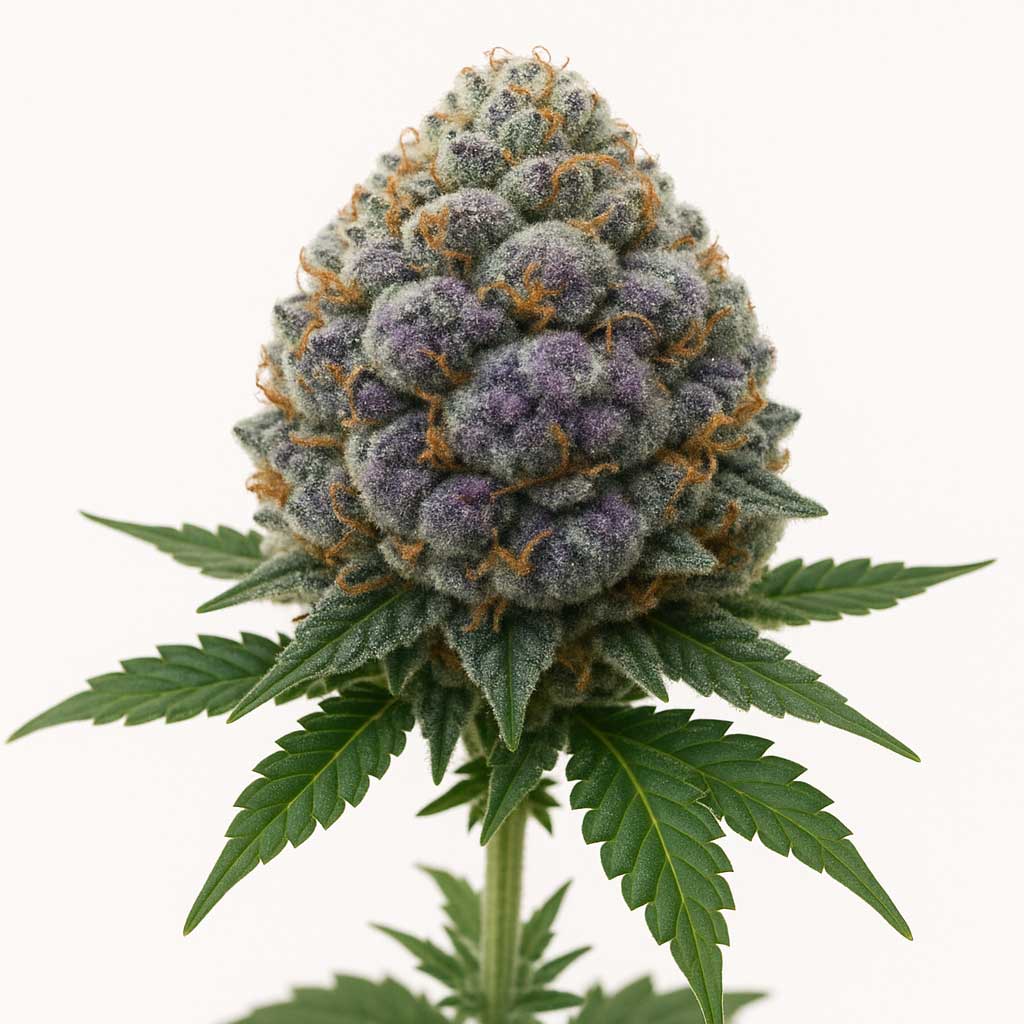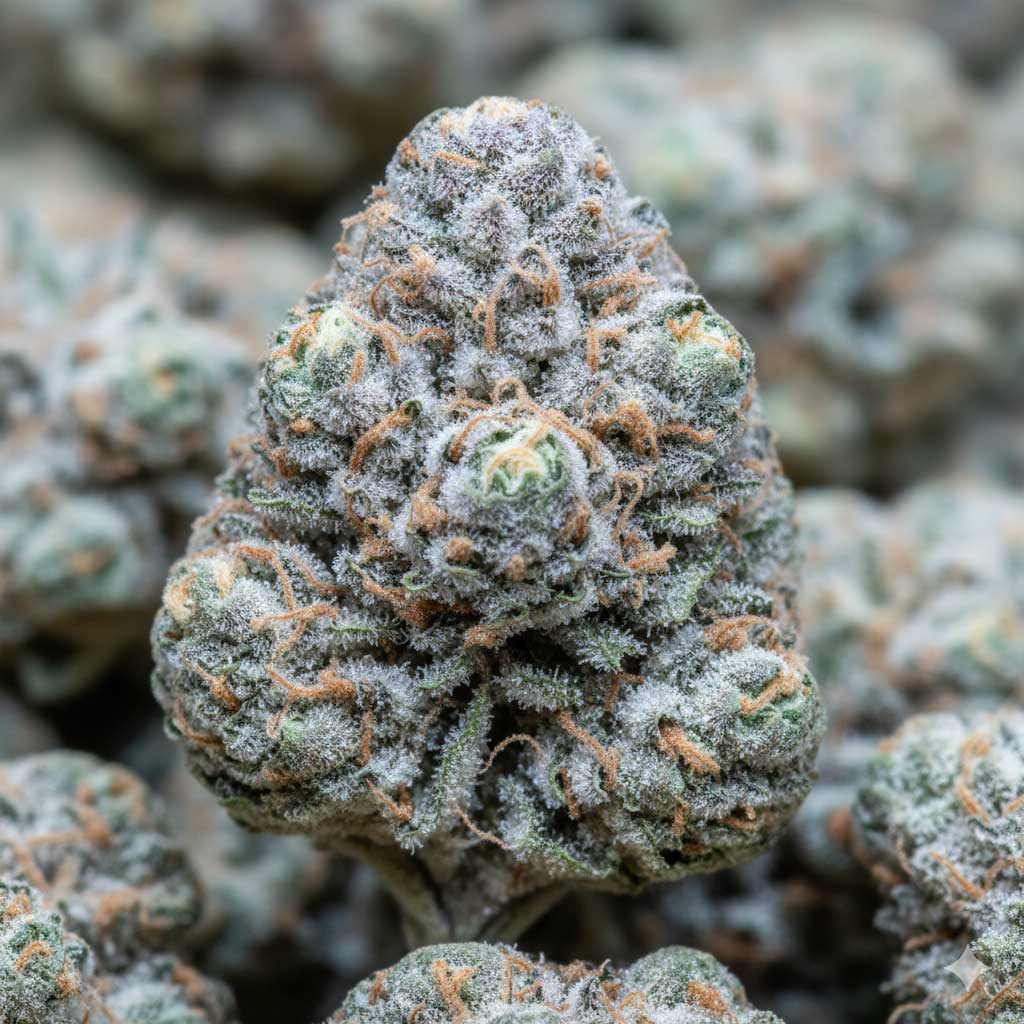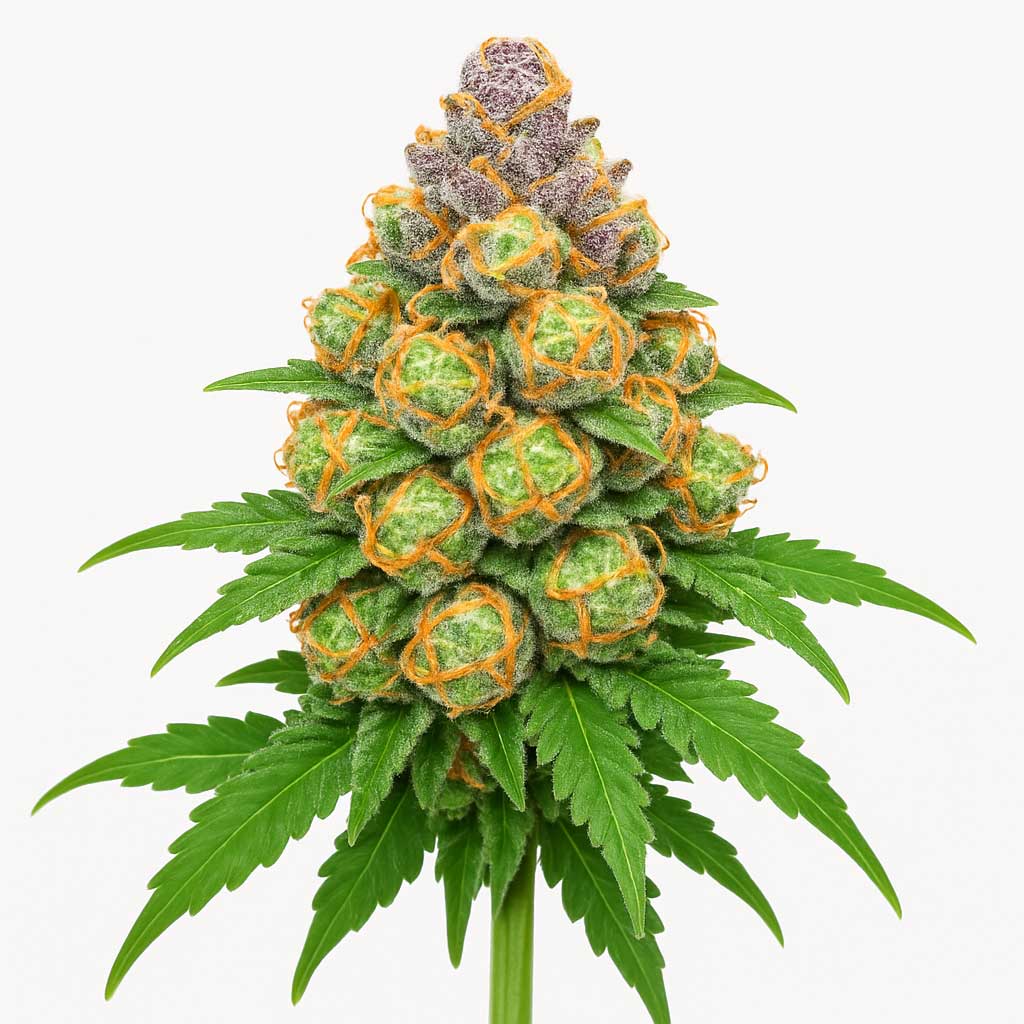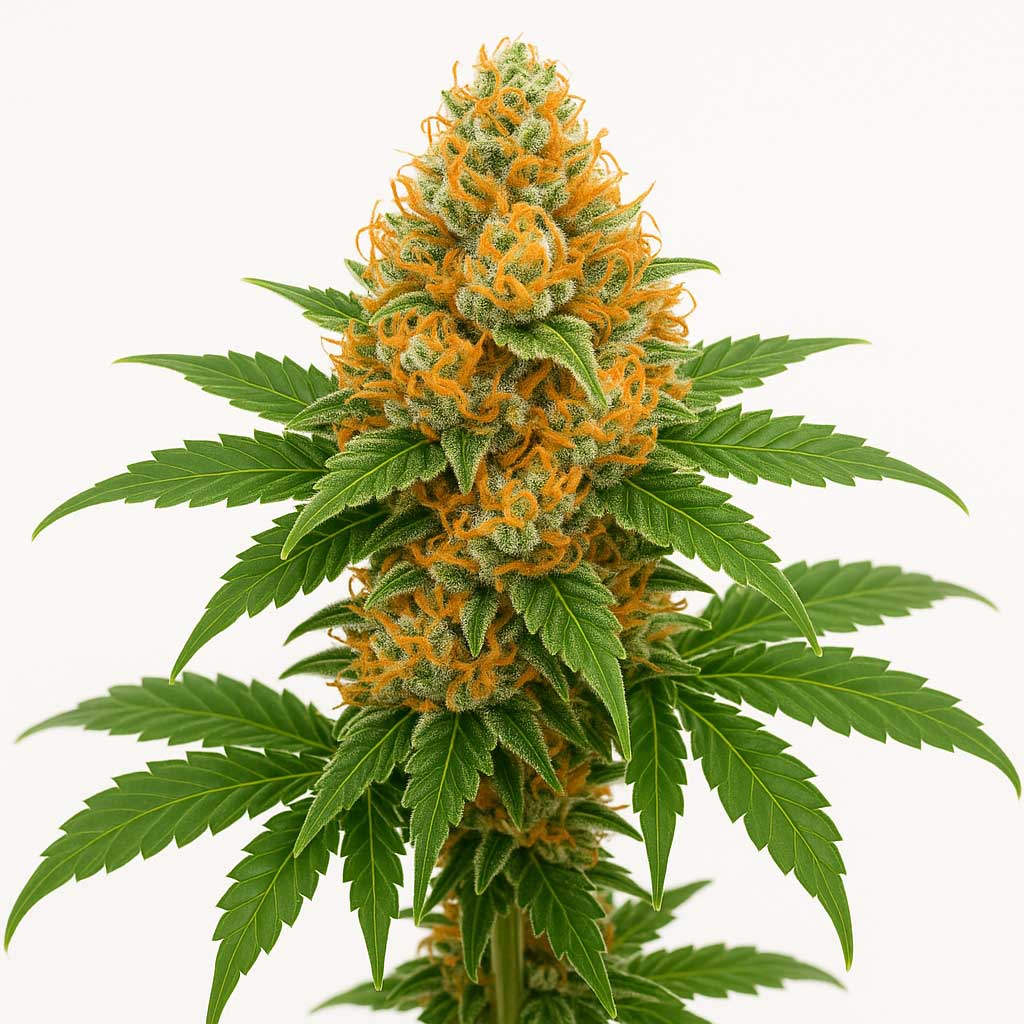Chrome Dome (Cannabis Strain) — Strainpedia
Chrome Dome is a high-potency Hybrid cultivar derived from Lemonheadz x Eye Candy. Recognized for its striking visual appeal—vibrant colors coated in heavy, shimmering trichomes—and an intensely sharp citrus aroma, it is frequently referenced in horticultural education for its vigor and high-THC expression. The information below is intended strictly for scientific and botanical reference.
Quick Facts
| Genetics | Lemonheadz x Eye Candy |
|---|---|
| Variety | Hybrid (Often Sativa-leaning) |
| Flowering Time | 8–9 weeks (indoors) |
| Yield Potential | 500–650 g/m² (High) |
| Plant Height | Medium; good flower-to-leaf ratio; responds well to trimming |
| Climate Preference | Indoor Control (Requires stable environment to express full color/frost) |
| Difficulty | Intermediate (Straightforward, but benefits from experienced nutrient management) |
Scientific & Botanical Overview
Chrome Dome is characterized by dense, compact buds with an excellent calyx-to-leaf ratio, making trimming efficient. The coloration is visually striking, often displaying a mix of vivid green and deep purple hues accented by bright magenta highlights. Its name is derived from the exceptionally heavy coating of trichomes that gives the flowers a shimmering, ‘chromed’ appearance. The flowering cycle is relatively fast, completing in 8–9 weeks, making it an attractive cultivar for commercial and craft growers.
Effects & Use-Cases (Reported)
- Commonly reported effects: intensely euphoric, clear-headed, uplifting, and creatively charged; followed by a balanced, soothing body calm.
- Use-case context: frequently selected for daytime or early evening activities, social events, or creative endeavors where high mental clarity is desired.
- Note: These are observational reports, not medical claims; outcomes are not guaranteed.
Aroma & Flavors
- Aroma: highly pungent, dominating with sharp citrus, lemon zest, and a bright, astringent, ‘cleaner-fresh’ quality, often likened to lemon-lime soda (Sprite) or gaseous lemon fuel.
- Flavor: a mouthwatering blast of sweet citrus on the inhale, often with notes of tart grapefruit, anise, and a tangy, effervescent, almost petrol-like finish.
- Terpene associations: limonene, caryophyllene, pinene.
Tested Cannabinoid & Terpene Ranges
| Compound | Typical Range* | Notes |
|---|---|---|
| Δ⁹-THC | ~27–30%+ | Known for high-end potency; concentration is heavily phenotype-dependent. |
| CBD | ~0–0.2% | Generally present at trace levels. |
| Limonene | ~0.8–1.5% | Dominant terpene; responsible for the intense citrus/lemon aroma. |
| Caryophyllene | ~0.3–0.6% | Spicy/pepper notes; contributes to depth and potential body effects. |
| Pinene | ~0.1–0.3% | Woodsy/pine notes; investigated for alertness-related effects. |
| Myrcene | ~0.1–0.3% | Herbal/earthy profile; present at moderate-to-low levels. |
*Ranges are literature- and lab-report-informed references and can differ with environment, harvest timing, post-harvest handling, and analytical methods.
Cultivation Notes
- Light Cycle: 18/6 vegetative; 12/12 flowering
- Humidity Targets: ~40–50% during flower; good airflow is required to maintain the high trichome density and prevent moisture buildup.
- Nutrition: Moderate to heavy feeder, especially during the bulking phase. Monitor Calcium (Ca) and Magnesium (Mg) as high light intensity is applied.
- Training: Topping and LST are recommended to maximize the number of primary colas and expose all flowering sites to light.
- Harvest Window: Late September to early October outdoors (Northern Hemisphere), benefiting from a dry finish to preserve resin quality.
Grower Notes (Week-by-Week Snapshot)
- Weeks 1–2 (Transition/Stretch): aggressive vegetative growth; manage height with trellis/training; stabilize pH/EC.
- Weeks 3–4: rapid flower site development; selective defoliation to expose secondary sites; start increasing Phosphorus (P) and Potassium (K).
- Weeks 5–6: peak biomass and resin accumulation; monitor for nutrient burn or deficiencies; add support for heavy, dense colas.
- Weeks 7–8: aroma intensification; buds darken and frost; initiate flush (tapering N) as desired.
- Week 9: ripening; harvest when trichomes show desired milky/amber ratio; dry 17–20 °C, 55–60% RH for optimal terpene retention.
Timelines shift with genotype and environment; prioritize plant health markers and trichome maturity over calendar counts.
Genetic Lineage
Chrome Dome is a product of Compound Genetics, resulting from a cross between Lemonheadz and Eye Candy. Lemonheadz contributes the foundational, intense lemon and citrus profile, while Eye Candy (a cross of Biscotti and The Menthol) provides the vigorous growth, extreme trichome density, and a subtle gaseous/minty depth, resulting in a unique, highly potent, and visually appealing hybrid.
Research Insights
This cultivar’s striking citrus profile is a classic example of high limonene expression, which is often associated with the reported energetic and euphoric effects. The balanced high, described as clear-headed yet physically soothing, is likely driven by the synergistic interaction of limonene with the caryophyllene and low levels of other balancing terpenes, reinforcing the importance of the entourage effect over single-compound metrics.
Frequently Asked Questions
Is Chrome Dome an Indica or Sativa?
Chrome Dome is classified as a potent Hybrid, typically exhibiting Sativa-dominant effects that are euphoric and clear-headed, with a smooth, non-sedating body calm.
What does Chrome Dome smell and taste like?
It has an extremely loud aroma of sharp, bright lemon zest, Sprite-like effervescence, and a hint of astringent lemon cleaning product. The flavor is syrupy sweet citrus with a tangy, zesty finish.
What are the typical effects?
Reported effects include a fast-hitting, euphoric headrush, clear-headed focus, and creative energy, balanced by a pleasant body relaxation.
How long does Chrome Dome take to flower?
Chrome Dome has a fast flowering time, typically finishing in 8–9 weeks indoors.
Is it suitable for beginners?
Chrome Dome is considered Intermediate in difficulty. It is resilient but requires attentive nutrient management and good environmental control to achieve its full potential in potency and color.
Educational Disclaimer: This page is provided for scientific and horticultural reference only and does not constitute medical or promotional advice. Cannabis cultivation, possession, and use are regulated by local laws. Always comply with applicable legislation in your region.








